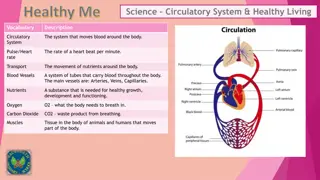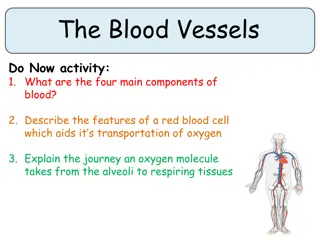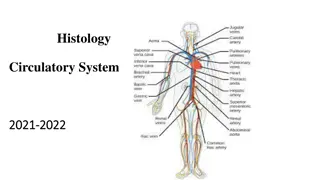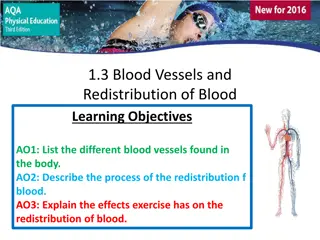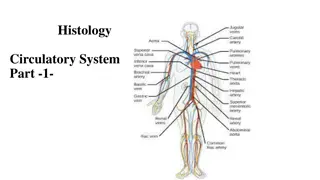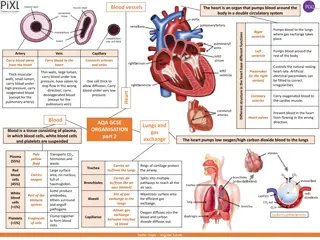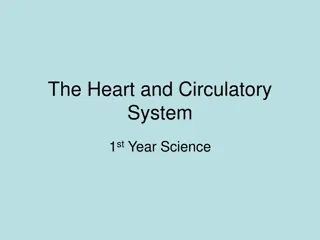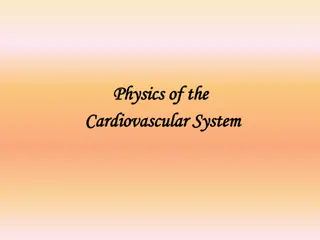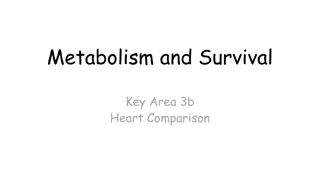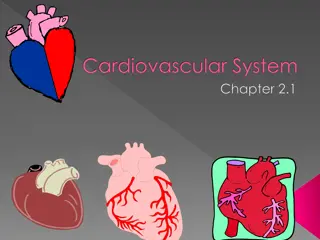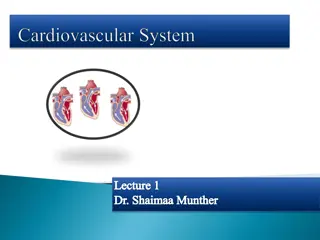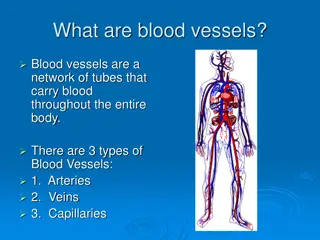Transfusion
Blood transfusion is a crucial medical procedure worldwide, with various components like packed red blood cells, plasma, platelets, and cryoprecipitate being utilized for efficient use. Differential centrifugation is employed for component preparation, ensuring precise separation of red blood cells,
2 views • 45 slides
Differential white blood cell count
Differential white blood cell count, also known as a leukocyte count, is a crucial test to determine the different types of white blood cells present in the blood. The cells are classified into granulocytes (neutrophils, eosinophils, basophils) and agranulocytes (lymphocytes, monocytes). Blood smear
3 views • 21 slides
Understanding Human Blood Groups and Genetics
Human blood groups are determined by the presence or absence of specific antigens and antibodies. The ABO system categorizes blood into four types (A, B, AB, O), while the Rh factor (D antigen) determines whether blood is RhD positive or negative. Blood group antigens are crucial for safe transfusio
2 views • 14 slides
Understanding How Diabetes Affects Blood Vessels
Diabetes can harm blood vessels, leading to complications due to high blood sugar levels. Hemoglobin A1c plays a crucial role in monitoring glucose control, with values above 6.5% indicating diabetes. Over time, high blood sugars can damage blood vessels, affecting blood flow and increasing the risk
1 views • 19 slides
Understanding Red Blood Cell (RBC) Count and Its Significance in Blood Health
Red blood cells, comprising nearly 45% of blood volume, play a crucial role in oxygen transport. The red blood cell count, measured as the number of cells per unit volume of blood, helps assess the adequacy of oxygen-carrying capacity. Normal values vary by age and gender. The experiment aims to det
8 views • 16 slides
Understanding the Components of Blood for Better Health
Explore the main components of blood such as red blood cells, white blood cells, platelets, and plasma. Learn how these components function, their percentages in blood, and how they impact human health. Discover the importance of blood donation and how changes in blood composition can affect overall
2 views • 19 slides
Understanding Blood Groups and Their Significance
Human blood types are determined by specific antigens and antibodies present on red blood cells, influencing crucial aspects like blood transfusions and familial relationships in forensic medicine. The ABO system, with its four main blood types (A, B, AB, O), plays a vital role in categorizing blood
7 views • 14 slides
Understanding Blood Cells and Their Functions in the Circulatory System
Blood is comprised of cells and plasma that circulate within the closed circulatory system. The formed elements include erythrocytes, platelets, and leukocytes, each playing vital roles in oxygen transport, defense against infection, and nutrient distribution throughout the body. The hematocrit esti
1 views • 38 slides
Understanding Health and Science: Circulatory System, Forces, and Geography Insights
Exploring the intricate workings of the circulatory system that transports blood, key components like white blood cells, red blood cells, and platelets, and the forces like friction and air resistance. Delve into geography insights focusing on Brazil and its grid references, temperature, currency, l
1 views • 5 slides
Importance of Transport System in Animals for Oxygen Supply
Animals require a transport system to meet tissue oxygen demands efficiently. The size limit for oxygen diffusion alone is around 1 mm due to the proportional increase in radius and diffusion properties. Blood is crucial for transporting oxygen, nutrients, waste products, cells, and heat, as well as
0 views • 17 slides
Understanding the Circulatory System in Animals and Plants
Transportation in animals and plants involves the movement of food, water, gases, and waste products through a circulatory system. Blood, a vital fluid connective tissue, carries out these functions by transporting essential substances like oxygen, nutrients, and waste products. The circulatory syst
0 views • 14 slides
Understanding Blood Vessels and Circulation
Explore the components of blood, features of red blood cells, and the journey of oxygen molecules in the circulatory system. Learn about the different types of blood vessels, their structures, functions, and how blood moves through veins. Engage in tasks and self-assessment to enhance your knowledge
1 views • 16 slides
Understanding the Circulatory System: A Detailed Overview
The circulatory system plays a vital role in transporting nutrients, oxygen, and other essential substances throughout the body. It consists of the blood vascular system (arteries, arterioles, veins, capillaries, and the heart) and the lymphatic vascular system. Understanding the general structure o
0 views • 31 slides
Understanding Blood Vessels and Circulation in the Body
Explore the intricate network of blood vessels in the body, including arteries, veins, and capillaries. Learn about the process of blood redistribution and the impact of exercise on circulation. Understand the vital role of the circulatory system in maintaining overall health and physical performanc
0 views • 14 slides
Insect Circulatory System: Overview and Functions
The insect circulatory system comprises an open type, where blood flows through the body cavity. Divided into three sinuses, it houses vital organs such as the heart and nerve cord. The dorsal vessel acts as the main organ of circulation, along with accessory pulsatile organs that supply blood to ap
0 views • 19 slides
Understanding Blood Cells and Transport Mechanisms
Your blood, consisting of red blood cells, white blood cells, platelets, and plasma, plays a crucial role in transporting substances like oxygen, nutrients, and waste products throughout your body. Red blood cells are specialized for oxygen transport due to their unique adaptations, while white bloo
2 views • 18 slides
Understanding the Circulatory System and Blood Vessels in Histology
The circulatory system, comprising the cardiovascular and lymphatic systems, plays a vital role in transporting essential substances throughout the body. It consists of arteries, veins, capillaries, and the heart. Blood vessels have distinct histological structures with three main layers - intima, m
1 views • 15 slides
Exploring the Components of the Circulatory System
The circulatory system, comprising the heart, blood vessels, and various components like arteries, veins, and capillaries, plays a crucial role in distributing oxygen, nutrients, and waste products throughout the body. The heart pumps blood through a double circulatory system, ensuring oxygenation o
0 views • 4 slides
Understanding ABO Blood Grouping and Rh Groups
ABO blood grouping and Rh factor testing are crucial for blood transfusions and forensic medicine. The presence or absence of specific antigens and antibodies in human blood determines blood type. Genetic inheritance from parents establishes blood type, with codominance influencing offspring phenoty
0 views • 13 slides
Understanding Blood Circulatory System in Animals and Plants
Blood plays a crucial role in the transportation of substances in animals and plants. It carries essential nutrients, gases, and waste products throughout the body, maintaining vital functions through the circulatory system. Learn about blood components, circulatory pathways, and the importance of p
5 views • 14 slides
Understanding Blood Components and Their Administration
Effective blood transfusion therapy relies on the availability and proper administration of various blood components. Separating blood components allows for better patient care by matching transfusions to individual needs and avoiding unnecessary components. Different blood products like packed red
1 views • 27 slides
Understanding the Circulatory System: Functions and Components
The circulatory system, comprised of pulmonary and systemic circulation, plays a crucial role in transporting oxygen, nutrients, and waste products throughout the body. It consists of the heart, arteries, veins, and capillaries which work together to ensure proper circulation. Blood, the carrier of
0 views • 21 slides
Understanding the Heart and Circulatory System in Science
Explore the key concepts of the heart and circulatory system, including the functions of arteries, veins, and capillaries. Learn about how the heart pumps oxygenated and deoxygenated blood, the role of valves, and the circulation process. Dive into engaging animations and resources to enhance your u
0 views • 6 slides
Understanding the Cardiovascular System: A Detailed Overview
The cardiovascular system, comprising the heart, blood vessels, and blood, plays a crucial role in supplying fuel and oxygen to the body's cells while removing waste products. This system functions as a double pump, circulating blood through the pulmonary and systemic circulatory systems. Proper val
0 views • 23 slides
Understanding the Human Body: Digestive and Circulatory Systems Exploration
Explore the fascinating world of the digestive and circulatory systems through mind mapping, definitions, blood smoothie recipes, and interactive activities. Enhance your knowledge with useful vocabulary and engaging content designed to deepen your understanding of how these vital systems function.
0 views • 15 slides
Understanding Vertebrate Circulatory Systems
Vertebrates have closed circulatory systems with efficient mechanisms for oxygen delivery through cardiovascular systems. Fish have a single circulatory system with a two-chambered heart, while other organisms utilize double circulatory systems for more efficient blood flow to both lungs and body ti
0 views • 16 slides
Medical Eligibility Criteria for Circulatory and Respiratory Diseases in CCS Outreach Presentation
This presentation outlines the medical eligibility criteria for circulatory and respiratory diseases under the California Children's Services (CCS) program. It covers conditions such as diseases of the circulatory system including endocardium, myocardium, and more, as well as respiratory conditions
0 views • 38 slides
Understanding the Cardiovascular System: An Overview
The cardiovascular system, comprised of the heart, blood vessels, and blood, plays a vital role in circulating nutrients, oxygen, and waste throughout the body. This summary provides insights into the structure and function of the heart's chambers, blood flow through the circulatory system, and the
0 views • 17 slides
Shark Circulatory, Respiratory & Reproductive Systems Overview
A detailed look into the circulation, respiration, and reproductive systems of sharks. The circulatory system of sharks includes a unique heat retention mechanism due to red muscle activity, with blood flowing from the heart to gills and back. The respiratory system involves heat generation in red m
0 views • 10 slides
Overview of the Circulatory System and the Heart
The circulatory system comprises the cardiovascular system and the lymphatic system. The heart, a four-chambered double pump, plays a crucial role in pumping blood through the vessels to the lungs and body cells. The heart's structure, function, and components like the atria, ventricles, and valves
0 views • 41 slides
Versiti Blood Center of Illinois: Community Impact through Blood Drives
Versiti Blood Center of Illinois, a nonprofit organization, plays a vital role in healthcare by organizing blood drives to ensure a sufficient supply of blood for hospitals in the Chicagoland and Northwest Indiana area. Through employee engagement, community outreach, and raising awareness about the
0 views • 10 slides
Understanding Complete Blood Count (CBC) Test
Complete Blood Count (CBC) is a panel of tests that evaluates different types of blood cells, including red blood cells, white blood cells, and platelets. CBC helps diagnose various blood disorders and monitor conditions that affect blood cells, such as anemia or infections. The test is ordered base
0 views • 20 slides
Understanding the Basics of Blood and Transfusions
Blood is a vital tissue that performs essential functions like delivering oxygen and nutrients, maintaining immunity, and controlling body temperature. Blood transfusions save lives by treating accident victims, transplant recipients, cancer patients, and those with blood-related diseases. Component
0 views • 20 slides
Blood Transfusion in Surgery: Types and Indications
Blood transfusion plays a crucial role in surgery, with different blood products such as whole blood, packed red cells, fresh-frozen plasma, cryoprecipitate, and platelets being used based on specific needs. Understanding the indications and proper handling of blood products is essential for safe tr
0 views • 13 slides
Overview of Blood and Hematology: Functions and Composition
The human body consists mostly of water, with blood making up approximately 8% of body weight. Blood is composed of plasma and formed elements, including red blood cells (erythrocytes), white blood cells (leukocytes), and platelets. Plasma, the liquid part of blood, contains various proteins such as
0 views • 12 slides
Understanding Blood: Composition and Functions
Blood is a vital fluid tissue in the human body, classified as a connective tissue. It consists of living cells known as formed elements suspended in a non-living matrix called plasma. The physical characteristics of blood, such as color range, pH level, and temperature, play crucial roles in mainta
0 views • 33 slides
Comprehensive Guide to Blood Collection Techniques in Medical Investigations
Blood collection is a crucial process in medical investigations where blood is withdrawn from patients for analysis. Methods include arterial sampling, venipuncture, and fingerstick sampling, each serving specific purposes. Venous blood is preferred over arterial blood due to accessibility and ease
0 views • 10 slides
Understanding Blood Vessels and Their Role in the Body
Blood vessels are a crucial part of the circulatory system, comprising arteries, veins, and capillaries. Arteries carry oxygenated blood away from the heart, veins transport deoxygenated blood back to the heart with the help of valves, and capillaries act as connectors between arteries and veins, fa
0 views • 5 slides
Understanding Blood Group and Cross Matching in Transfusion Medicine
Blood group and cross matching play crucial roles in determining blood compatibility for transfusion. The presence or absence of specific antigens on red blood cells, along with antibody reactions, help identify blood types and ensure safe transfusions. Cross matching involves testing donor and reci
0 views • 8 slides
Understanding Complete Blood Count (CBC) Testing
Complete Blood Count (CBC) is a crucial test that provides information about the composition of a patient's blood, including red blood cells, white blood cells, and platelets. This test helps in diagnosing conditions such as anemia, infections, and more. CBC involves analyzing parameters like RBC co
0 views • 20 slides








